

Mount Koya: A Peaceful Retreat
|
Widely known as one of Japan’s most sacred sites, Mount Koya is a large temple settlement located in Wakayama Prefecture. Over 1,200 years ago, the Japanese monk Kobo Daishi introduced Shingon Buddhism to Japan and chose Mount Koya as a sacred site. It is said that the eight peaks of the mountain resemble a lotus, making it auspicious. Since then, Mount Koya has been the centre of Shingon Buddhism, with 117 religious buildings scattered across the entire area. In 2004, it was also recognised as a UNESCO World Heritage Site.
One of the most important sites is Danjo Garan, which is known as the centre of the Mount Koya settlement and the first site that was built by Kobo Daishi. Standing at 48.5 metres tall, the red Konpon Daito (Great Central Pagoda) is the most eye-catching architecture, and believed to be Japan’s first square two-storied pagoda. Inside, one can find Buddha statues and pillars painted with depictions of the spiritual awakening of Buddhism. There is also the Kondo Hall, a wooden temple hall where religious rituals are held. Another prominent site is Kongobu-ji, which is recognised as the head temple of Shingon Buddhism. At first, it was built by the feudal lord Toyotomi Hideyoshi to commemorate the death of his mother. The building features beautifully painted sliding doors as well as Japan’s largest rock garden. The rocks are arranged in a way to show a pair of dragons emerging from a sea of clouds. Okunoin is considered to be the most sacred spot within the complex, and also where one can find the mausoleum of Kobo Daishi, who is said to be still meditating to this day. Monks carry food to Kobo Daishi twice every morning at 6am and 10:30am, in a ritual known as Shojingu. In order to reach Kobo Daishi’s mausoleum, one needs to walk along a two-kilometre pathway that is lined with towering cedar trees that are several hundred years old, and also home to more than 200,000 tombstones and commemorative monuments. Among these tombstones, are those that belong to prominent monks and feudal lords, as they wished to be close to Kobo Daishi in death in order to reach salvation. Besides visiting Mount Koya, one of the best ways to experience it is to do a shukubo, or an overnight stay at a temple lodging. There are 52 temples, which offer the experience. It usually includes breakfast and dinner that are shojin ryori (vegetarian Buddhist cuisine), and attending morning prayers. Mount Koya in particular, is well-known for its Koya tofu and sesame tofu. At certain lodgings, visitors may also try copying a sutra or meditating in the Ajikan way. If you wish to bring back something to remember your stay, some memorable souvenirs include juzu prayer beads and shuincho notebooks where you can stamp red seals of temples or shrines that you have visited. Less than two hours away from Osaka, Mount Koya is an ideal place to visit if you are looking for a peaceful retreat. |
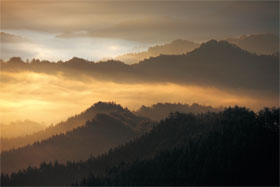 © Miyamura Masanori/Aflo 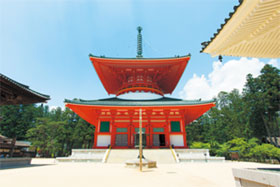 © Miyamura Masanori/Aflo 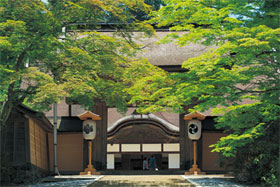 © Miyamura Masanori/Aflo 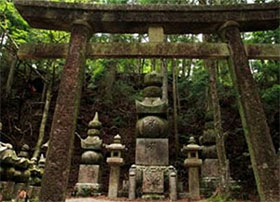 © Japan Up Close 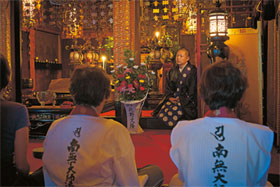 © Miyamura Masanori/Aflo |
Resources
|
“A pilgrimage to a celestial place: Mount Koya”. 2015. niponica. https://web-japan.org/niponica/niponica16/en/feature/feature07.html. “Koyasan”. 2023. Tourism Exchange Division, Wakayama Prefectural Government. Accessed 18 August. https://en.visitwakayama.jp/destinations/koyasan/. “Visit Mount Koya, Japan’s Most Sacred Mountain”. 2022. Japan National Tourism Organization. https://www.japan.travel/en/uk/inspiration/visit-japan-s-most-sacred-mountain/. “Koyasan (Mount Koya)”. 2023. japan-guide.com. Accessed 18 August. https://www.japan-guide.com/e/e4900.html. |
|
Japan Creative Centre 4 Nassim Road, Singapore 258372 +65 6737 0434 / jcc@sn.mofa.go.jp https://www.sg.emb-japan.go.jp/JCC/ Nearest parking at Orchard Hotel & Delphi Orchard |
 |